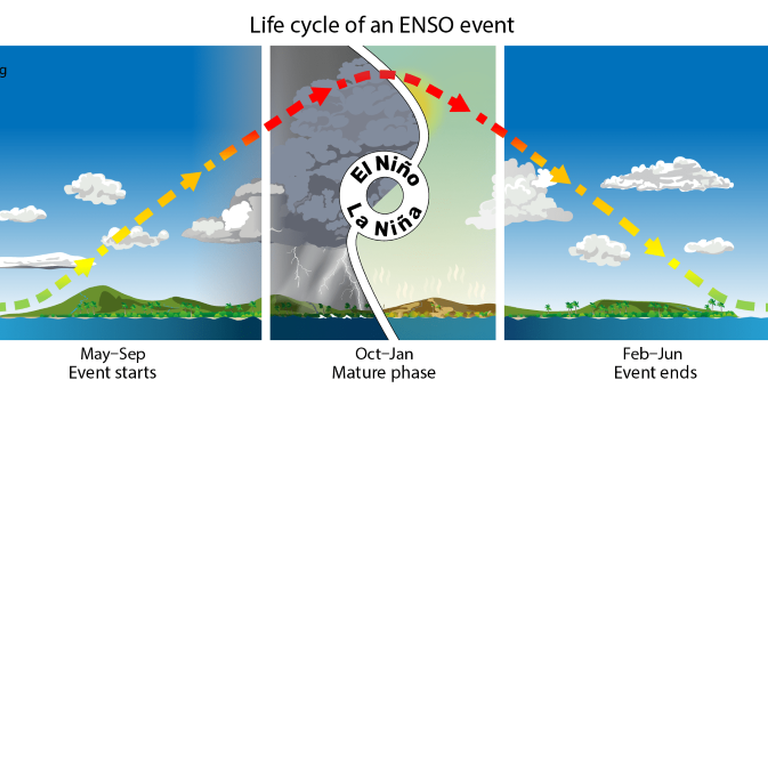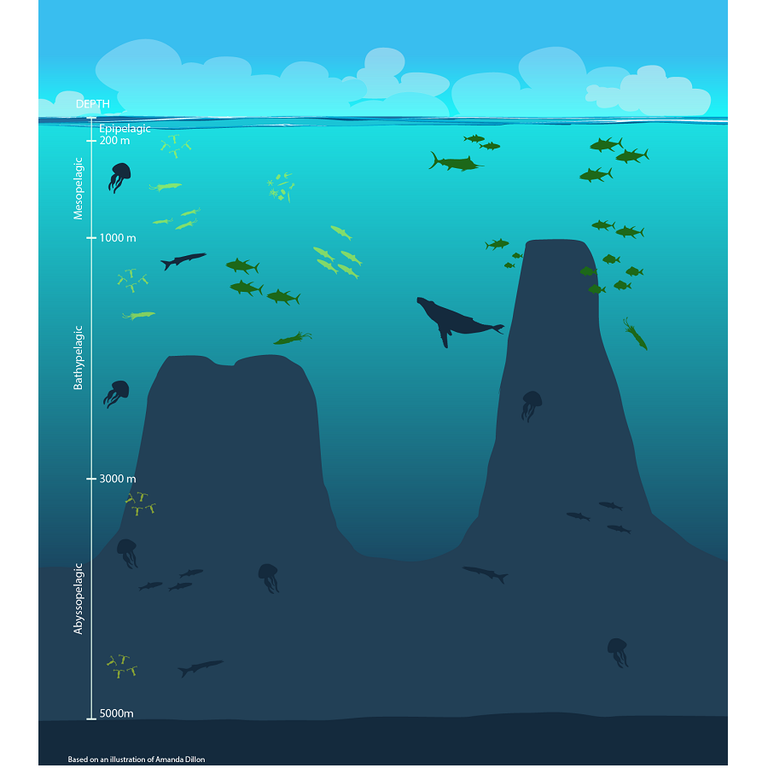Exploring the environmental conditions of the pelagic zone to support sustainable fisheries management
Tuna and other top predators evolve in the open ocean, in the pelagic zone, that is the water column, away from land and from the bottom of the sea. Conditions in the pelagic environment are very changeable and strongly influenced by atmospheric conditions and water masses. The pelagic habitat is moving with currents and eddies, and its characteristics (light, temperature, salinity, oxygen, nutrients…) change according to the time of the year, to the location, to the depth and to the seafloor topography (seamounts, trench…), affecting the marine life in various ways.
Understanding the pelagic habitat for sustainable fisheries management requires information about ocean and climate dynamics. Oceanography takes into account the movements in the ocean (currents and waves); the chemical, physical and biological properties; the geology of the ocean floor and plate tectonics; water temperatures; and the influence of the climate on the ocean. An oceanographic characterisation of the Pacific Ocean can help fisheries managers to better understand the implications of climate variability on fisheries and to guide the development of adaptation strategies to cope with fluctuations in tuna availability.
We work with a number of partners to increase our knowledge about seamounts, which are important for biodiversity and fishing. This work seeks to understand why some seamounts are more abundant in marine life than others. Research into the mechanisms that drive the activity around seamounts could help fisheries managers to understand their importance for catch rates and effort for some tuna species, as well as informing stock assessments and improving our ecosystem and population dynamics modelling (SEAPODYM). This research can also benefit the management of other fish stocks associated with seamounts, such as deep-sea snappers, which may be vulnerable to exploitation.


